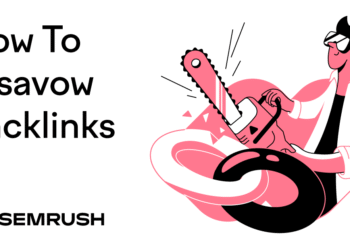
Turn routine updates into must-reads with creative newsletter formats that spark curiosity and connection among employees.
Tasked with creating an email newsletter? You might be asking, “Why are newsletters important?” Short emails and quick chats are perfect for need-to-knows and getting work done, but they aren’t a great place to tell stories or share larger chunks of information. That’s where a newsletter shines.
An email newsletter provides your organization with a dedicated place to share the “good-to-knows” — updates that aren’t urgent but are still valuable — along with stories and more lighthearted content.
A newsletter is also the perfect place to share evergreen HR benefits and perks that are relevant throughout the year, seasonal updates and events, employee milestones, department highlights and culture-building stories. It gives employees a single place to catch up on company progress, wellness resources and a few fun extras like polls or day-in-the-life features.
What is a good email newsletter design?
An email newsletter usually includes consistent sections, clear headings, engaging images and links to additional information (e.g., intranet pages, LinkedIn posts, suggested courses, webinars or conferences). For shorter newsletters, you might embed the content in your email. For longer newsletters, you might attach a PDF to an email or link to a PDF that’s accessible via your intranet.
How long should an email newsletter be?
There’s no one-size-fits-all for an engaging newsletter. The purpose of your newsletter — and how often you send it — will determine the length of each issue. A weekly newsletter works best with short, skimmable updates. Data reveals that employees are receptive to getting more messages, provided they are short. Conversely, a quarterly newsletter might be more like a short magazine that covers higher-level themes, progress updates and summaries to capture the bigger picture. By benchmarking your sends and reviewing the results, you can determine how long your email should be and which days employees prefer receiving them.
5 ways to make internal email newsletters more interesting
- Start with the content. Before focusing on your email newsletter designs, consider the content. Boring content that’s well-designed still won’t engage your people. Ask the following questions:
- What is the purpose of our newsletter? Updates? Announcements? Tips? All of the above?
- What topics do our employees need to know?
- What topics do our employees care about most?
- How can we share information in a fresh way?
- Feature employees. Go beyond sharing the job titles of new hires or milestone anniversaries. In addition, consider how you can feature “day in the life” stories, things employees love, or quirky Q&As like, “What’s your unpopular opinion?” By infusing more personality, you can make the content more human and fun.
- Share behind-the-scenes updates. Add context and storytelling to company updates so they feel less like a dry announcement and more like an inside look at decision-making. For example:
- Instead of saying “This year, we have two new health plans available,” explain: “We looked into ten options and received feedback from our employee wellness committee. Then we narrowed down the remaining six contenders based on coverage, affordability, and provider access.”
- Or, let’s say you’re rolling out a new recognition platform. Rather than saying, “We’re rolling out [X],” explain, “We piloted three recognition platforms with 50 employees. The platform we chose had 30% higher engagement and allows peer-to-peer recognition, which many of you asked for.”
People like to feel in the loop. While you won’t be able to share every detail of every high-level decision, letting folks peek into your process will engage them.
- Package information in listicles. A listicle is information organized in a numbered list with explanations for each item. Pull together company-specific roundups, such as the most-read intranet resources, popular Slack threads or the top ten photos from an employee event. Alternatively, if you’re a remote company, compile ten of the best at-home desk setups (with photos submitted by employees).
- Incorporate different perspectives. If you’re a global company with diverse departments or a dispersed workforce, highlight what’s happening in different offices, teams, or regions. By sharing diverse perspectives and emphasizing different aspects of your organization, you can help build connections and foster a broader sense of community.
5 ways to design engaging internal newsletters
After you tackle the content, you can focus on creating a good newsletter design. Here are five cool email newsletter ideas.
- Bulletin board newsletter. For a short newsletter, consider presenting information as if it’s on a bulletin board. Your email newsletter design can include short “sticky note” updates, each with a headline and one sentence description. This format will keep content short and scannable. You can hyperlink words to direct employees to additional details without increasing the word count.
- Social media newsletter. Another good newsletter design is to format sections styled like Instagram posts. Include a single image, a bold headline and a short caption. This visual-first design is engaging, easy to skim and feels familiar.
- Vlog-style newsletter. When it comes to email newsletter design, think about how you can use other forms of media, beyond just text. Consider sending a 2–3 minute video, led by a leader (or rotate through willing employees). You can use a consistent, branded intro/outro and separate topics into chapters. To keep things accessible, include captions and link to a transcript.
- Magazine-style newsletter. If you send your newsletter monthly (or less frequently), consider a more comprehensive email newsletter design, such as a magazine-style, featuring bold headlines, clear sections and consistent columns like an “Employee Spotlight” and a “Benefit of the Month.” This design makes your content scannable and fun. Employees will feel like they’re flipping through a magazine rather than a work email.
- Themed newsletter. Regardless of format or length, consider theming your editions, like Back to School in September or New Year, New Goals in January. You can carry the theme through the email newsletter design and your content.
Want to Master the Employee Newsletter? Learn newsletter writing and design best practices in The Employee Communications Academy! It’s free, and covers data-backed best practices to shape your internal communication strategy for maximum engagement.
The post Good newsletter design ideas to engage more employees appeared first on PR Daily.













